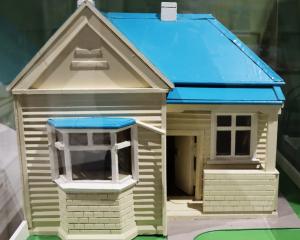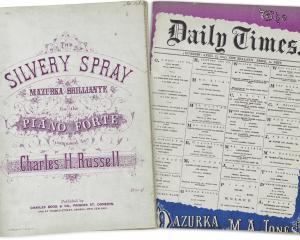In the first of a new series on the little-known stories behind some of Dunedin's collections, Otago Museum reveals how part of the fabled HMS Bounty fetched up in Dunedin.
The tale of the infamous HMS Bounty mutineers - who became the first European residents of Pitcairn Island - has captured imaginations since 1789. Thanks to former Otago Museum director H.D. Skinner, objects from this real-life adventure story are on display in the museum's Pacific Cultures Gallery.
The Bounty sailed from England to Tahiti to collect breadfruit plants. Shortly after leaving Taihiti, a rift developed between Commanding Lieutenant William Bligh and first mate Fletcher Christian, and Bligh began to lose control of the crew. After three and a-half weeks of conflict Bligh and the 18 crew members loyal to him were forced on to the ship's open launch vessel and cast adrift. They arrived at Timor 47 days later, an amazing feat.
Under Christian's leadership the mutineers took control of the Bounty. They sought to establish a new home in the Pacific, sailing to the island of Tubuai and then on to Tahiti, where many of the crew remained. Nine months after the mutiny eight crew members including Christian and a number of Tahitians arrived at the uninhabited Pitcairn Island.
The Bounty was burned offshore in January 1790. This prevented the mutineers from being found by the British Navy and ensured that all who had come to the island would remain.
Parkin Christian (b. 1883, d. 1971), a direct descendant of Fletcher Christian, was a fisherman and coxswain of one of the Pitcairn Island boats. He also served eight terms as the island magistrate. In 1933, Christian spotted the Bounty's gudgeon (the metal hinge of the ship's rudder) while fishing. He recovered it and brought it to shore.
Christian wrote to Otago Museum in 1935, one of several inquiries he made to New Zealand museums. By offering to sell the gudgeon, Christian hoped to raise money for his son Richard to attend the Seventh Day Adventist New Zealand Missionary College.
H. D. Skinner was the only one who responded to Christian. Skinner offered 20 for the gudgeon, which was accepted. Through his dealings with Christian, Skinner secured one of the very few remaining relics of the iconic Bounty. This contact regarding the Bounty relics also led to the museum acquiring a large Pitcairn Island stone statue in 1936. The statue was made by the Polynesian people who had inhabited Pitcairn long before the Bounty arrived.
• ''Cool and collected'' will run fortnightly in the Magazine section, sharing stories from the collections of Otago Museum, Toitu Otago Settlers Museum, Dunedin Public Art Gallery and Olveston.







![‘‘Neil’s Dandelion Coffee’’. [1910s-1930s?]. EPH-0179-HD-A/167, EPHEMERA COLLECTION, HOCKEN...](https://www.odt.co.nz/sites/default/files/styles/odt_landscape_small_related_stories/public/slideshow/node-3436487/2025/09/neils_dandelion_coffee.jpg?itok=fL42xLQ3)



